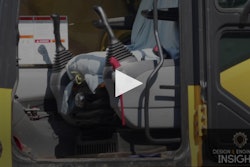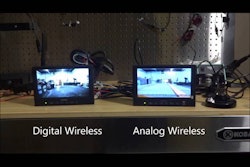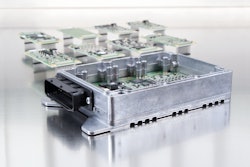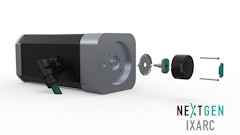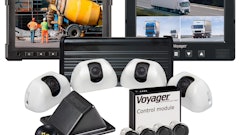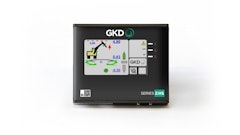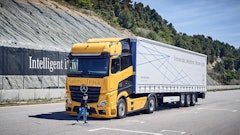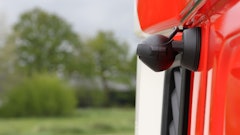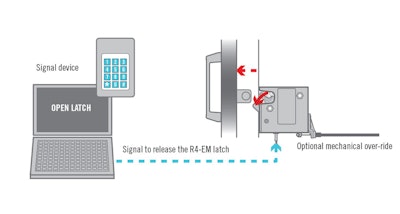
Incidents of construction equipment theft are on the rise in North America, according to the National Insurance Crime Bureau (NICB). As off-highway OEMs continue to incorporate cutting edge technologies into newer equipment models, the owner faces new challenges in securing this equipment against the threat of vandalism or theft on the job site.
With progressive designs and upgraded features, newer heavy-duty equipment models not only allow for longer runtime and improved productivity, they also contain expensive sub-systems and components that make these machines highly sought after targets for theft. Because equipment is generally stored on site during a job, security can be a challenge for the equipment owner, who often relies on traditional lock-and-key mechanisms to secure the fleet.
This growing problem has triggered a greater sense of urgency among off-highway OEMs to incorporate new security methods into their designs to make equipment less vulnerable to theft and vandalism. As a result, there has been a steady increase in inquiries regarding intelligent electronic locking and access control – not only to prevent equipment theft, but to protect tools, components and operators.
Off-highway OEMs have long relied on traditional mechanical locks to keep their equipment secure. Considering that numerous copies of a master key are often made and assigned to multiple users, it can be hard to keep track of who has access to the fleet and when.
To address this issue, many OEMs have turned to independent vendors to provide separate padlocks in addition to factory installed key locks to protect access to cab doors and toolboxes. Unfortunately, this added layer of security also comes at an additional cost to the buyer.
Despite these efforts, the total value of construction equipment stolen annually is between $300 million and $1 billion according to the National Equipment Registry (NER) 2011 Theft Report. Buyers are looking to off-highway equipment OEMs for more secure solutions, and in turn, OEMs are investigating security methods used in other industries.
Inspired by the automotive industry
Automotive trends often set expectations that make it into the off-road industry, such as the ability to unlock a door remotely. The automotive industry adopted remote control locking/unlocking over 30 years ago, and keyless entry is standard across most automobiles today. The technology most commonly used is radio frequency (RF), whereby the user presses a switch on an RF transmitter (usually a key fob), which sends a wireless signal to a receiver mounted on the vehicle. The receiver, which has been previously “paired” with the transmitter upon receiving a valid RF signal, actuates relays which operate the electronic power door locks installed throughout the vehicle.
Some automobiles have also adopted digital keypads, which are mounted to the vehicle and send a signal to lock and unlock power door locks. Others have adopted passive RF systems that unlock the doors as soon as the transmitter is within a specific proximity of the receiver. More recent trends include Bluetooth based access where the user provides the unlock signal via wireless communication using any Bluetooth-enabled device, such as a smartphone.
An electronic access solution can incorporate logic to control auxiliary functions such as lighting, alarms and audit trail data for tracking access attempts over time. And of course, electronic locking provides the added intelligence to easily add, delete and remotely control valid digital “keys” or credentials—a major improvement over mechanical key management. These electronic mechanisms add an additional layer of both security and flexibility to off-highway equipment applications by helping to improve access and control.
Recognizing the potential for this technology in the off-highway market, OEMs are beginning to incorporate remote locking devices into their equipment.
Benefits of electronic access
Off-highway equipment that has been outfitted with electronic locks and latches allows the equipment owner to remotely lock and unlock vehicles via a signal through a connected key fob, keypad or Bluetooth enabled device. These electronic access solutions save a digital record of activity, allowing the equipment owner to view the status of each access point, such as when an engine hood or toolbox was opened and by whom.
This information is available remotely and can be networked with other security systems. If a machine is stolen from the job site, the owner can contact a security service, which can locate and lock that piece of equipment.
This remote lock/unlock feature can also be used where operator safety is a challenge, such as when an operator must climb a ladder to access the cab door on a large piece of construction equipment. Integrating electronic access such as a RF proximity system into the cab door design can provide a safe means of opening the door remotely before the operator starts the climb, allowing four points of contact all the way into the cab.
Electronic access evolution
OEMs are working with experienced suppliers to design complete electronic access solutions into their equipment. Southco Inc. (company information, 10056116), Concordville, PA, offers a R4-EM electronic rotary latch to provide OEMs and equipment owners secure, concealed latching that can be networked with access control devices including remote control key fobs, pin pads and electronic keys.
The R4-EM outdoor electronic rotary latch can withstand dust, humidity, extreme temperatures and other environmental conditions that can be damaging to a system. Its latching mechanism is sealed against moisture and dust, has a high working load and can be easily integrated into engine hoods, toolboxes and cab entry applications.
Ensuring the security and safety of off-highway vehicles and machinery continues to be a challenge for owners and operators of this equipment. Incorporating robust electronic access solutions into equipment designs early in the engineering process enables a significant improvement over traditional security and safety measures that can’t always provide enough protection in every application.



